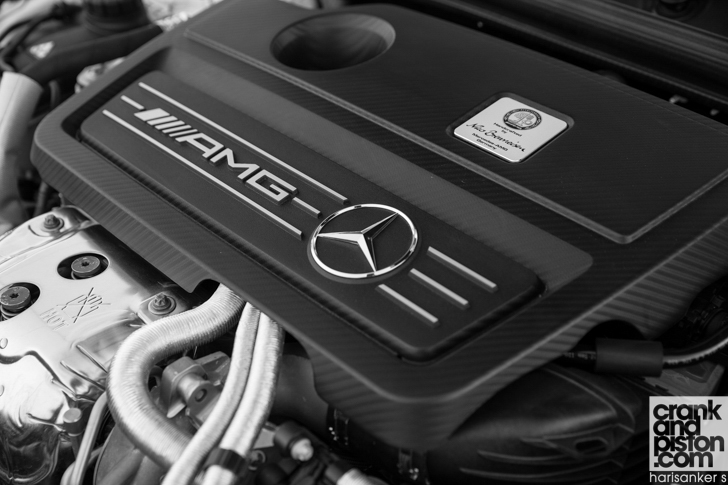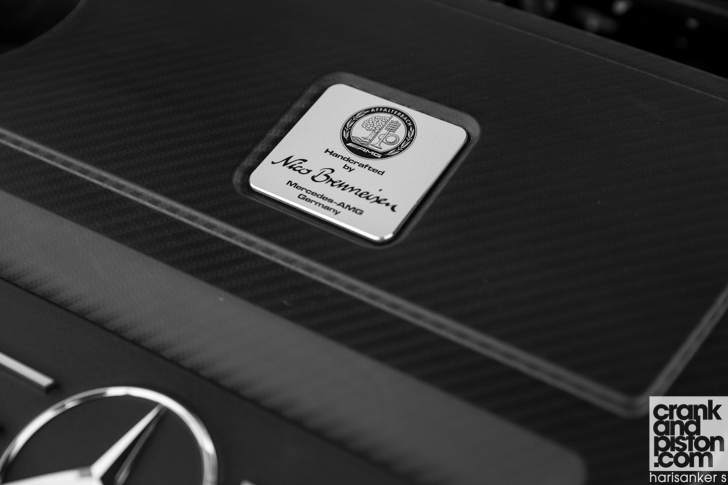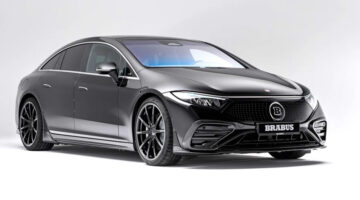Mercedes’ CLA 45 AMG gets a massive 355bhp from its 2-litre engine. How?

A few years ago, car manufacturers introduced a new generation of 2-litre, four-cylinder powered cars that, for the first time, had a power output of more than 200bhp. “This is insanity,” frothed the world. “You need big capacity engines with more cylinders to get that kind of power. They’ll blow apart, surely? What an amazing age we live in,” they all said.
Well, that was then, and nowadays 200bhp is nothing for a four-cylinder engine. Massive advances in engine technology, driven in large part by a demand for cleaner, more efficient engines, have meant that the boundaries previously established have been pushed right back.
At the forefront of this boundary-pushing is Mercedes-Benz. The CLA 45 AMG, which is available in both saloon and shooting brake variants, is powered by a turbocharged, 2-litre four-pot that pushes out a whopping 355bhp – the most powerful volume production engine in the world.* So how did the engineers at AMG’s headquarters in Affalterbach, Germany manage to massage so much power from such a small unit? As you might suspect, the devil is in the detail. Every aspect of the combustion process was optimised to ensure maximum efficiency.

We’ve come a long way since the days of carburettors, and the AMG engine uses spray-guided direct petrol injection in each cylinder, by way of piezo injectors positioned centrally in the combustion chambers. Combined with multiple spark ignition, this means that the exact combustion sequences can be controlled by computer, optimising both how much fuel is sprayed into the cylinder, and exactly when the spark occurs. The result? The most efficient, controlled explosions possible.
Now, the turbo. AMG used a twin-scroll turbocharger, which uses back pressure and the increased temperature from the exhaust gas, as well as the impulse – that is, the product of force and time. The result is that pressure in the turbo builds more quickly than a regular device, up to 1.8 bar, which combined with a derestricted exhaust means a swifter build-up of torque in the lower rev range.
To combat the extra heat, AMG developed an advanced cooling system using elements of that found in the SLS AMG. The system uses a combination of air and water cooling. All that power and torque could prove problematic in a front-wheel drive car, but no such worries for the CLA 45 – it uses 4MATIC permanent all-wheel drive to help harness the grunt to the tarmac.

The CLA 45’s engine, each one built by hand by a single engineer, is the current leader in power output for a 2-litre four-banger, but it’s started a battle between manufacturers to see who can push the technology the furthest. The latest to throw down is Volvo, which has unveiled details of a new twin-turbocharged unit that will produce 450bhp. Currently though, the engine is only a concept, meaning Mercedes will hold the title for a little while longer.
*Earlier this year Mitsubishi produced a limited edition Evo X in the UK, called the FQ-440, which put out 440bhp. But that was only in very small numbers, and they’re all sold now. It was high-maintenance, needing the oil changed every 1600km and servicing every six months.
– FULL GALLERY OF SHOTS AVAILABLE HERE – CLICK –
Awesome set of WALLPAPERS available HERE
Technical specifications for the Mercedes-Benz CLA 45 AMG available HERE



